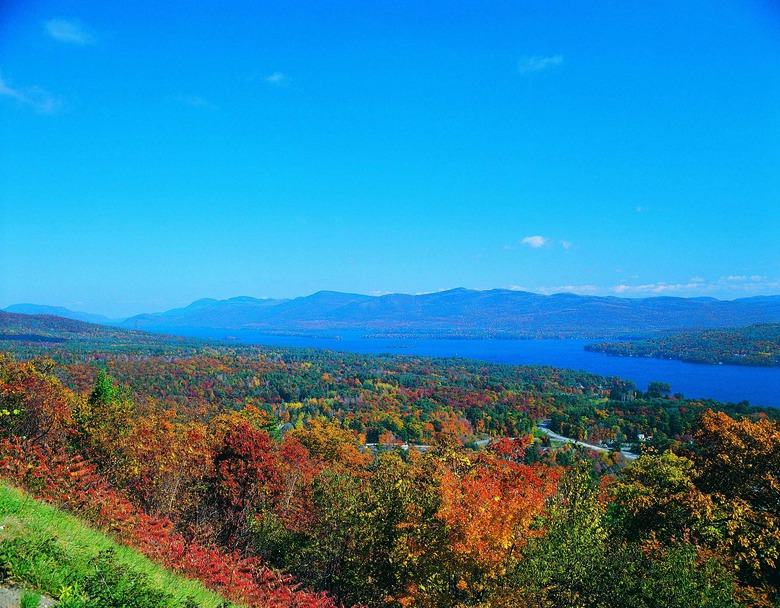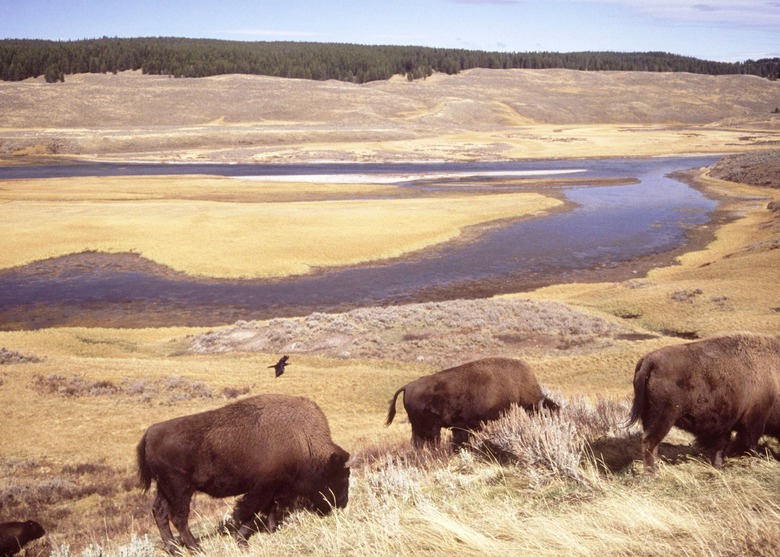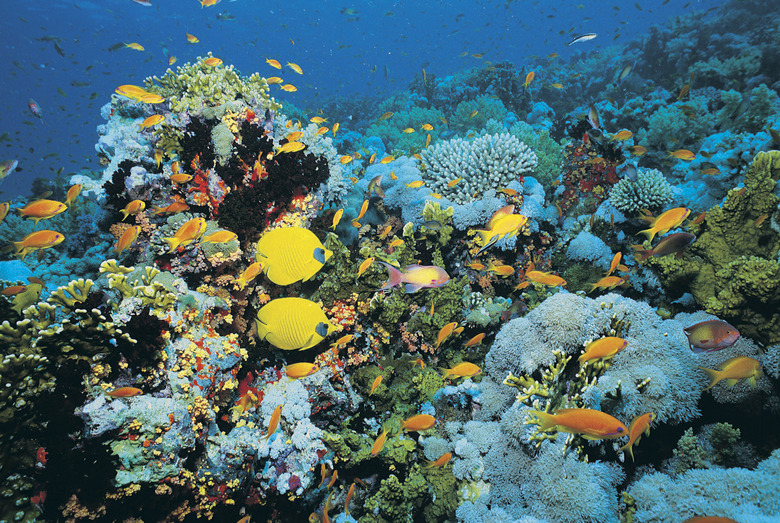Different Types Of Ecosystems
An ecosystem comprises the geography, temperatures, rainfall, plants and animals in a specific area. These features include the physical, biological and chemical aspects of a specific habitat. Each of the types of ecosystems have various abiotic features, such as sunlight, soil moisture, rainfall and temperatures. Biotic features of an ecosystem include interrelationships among predators, prey and detrivores–organisms that help to break down decaying or dead organic matter.
Polar
Polar
Polar ecosystems are located on the top and bottom of Earth. These ecosystems often have flat surfaces covered by ice for much of the year. The precipitation is typically snow, although it is possible to see hail or sleet on warmer days. The animals in polar ecosystems are specially adapted to extreme cold. Polar animals include penguins, polar bears, seals and arctic birds.
Mountain Zones
Mountain Zones
Mountain ecosystems exist at high altitudes and frequently have limited vegetation, although bushy plants may be evident. The landscape is rocky, but they have some of the most beautiful ecosystem images on Earth. Temperatures tend to be low due to the height of the mountains. Precipitation tends to be in the form of snow in the higher regions, but mist and rain are possible as well.
Relationships between prey and predators, such as goats and foxes, play key roles in maintaining the balance of this and other ecosystems. Some mountain ecosystems are home to cliff-dwelling birds and eagles.
Tundra
Tundra
The tundra ecosystem is similar to the polar ecosystem. Often polar regions are referred to as tundra zones. Tundra zones are characterized by permafrost, or frozen ground, and limited vegetation. Long periods of light and darkness alternate though the year with half the year being dark and half the year being light.
Few animals and plants are able to survive in these conditions. Precipitation on the tundra is often snow. Because of the often remoteness of these ecosystems, you may need to rely on ecosystem images to study these areas instead of visiting it in person.
Read more about the characteristics of the tundra.
Temperate Forests
Temperate Forests
Temperate forest ecosystems are most commonly found in mid-latitude areas between the polar regions and the equator. Temperate ecosystems have very cold winters and warm summers. These forests have two types of tree growth: evergreen, which keep their leaves all year-round, and deciduous trees, which drop their leaves seasonally.
Temperate forest ecosystems provide shelter and food for a large variety of animals. Rain is often plentiful and the soil tends to be fertile, as it is not prone to long freezing periods.
Grasslands
Grasslands
Grassland ecosystems occur in temperate zones but they do not get enough rain or precipitation to support a forest. Grasslands are typically flat and have rich soil. These ecosystems support a large number of animals, including prey species, such as buffalo, and predators such as wolves.
Read more about the types of grassland ecosystems.
Different Ecosystems in the Tropical Rainforest
Different Ecosystems in the Tropical Rainforest
Tropical rainforest ecosystems are located near the equator and are warm all year-round. Because of the warmth and high level of precipitation, tropical rainforests have a year-round growing season. Rainforest plants tend to grow large as they compete for sunlight. However, rainforest soil tends to be poor as the forest nutrition is locked in the vegetation. Rainforest ecosystems contain the greatest number of plant and animal species on land.
There are also different ecosystems in the tropical rainforest in the various layers of the forest itself (the canopy, the forest floor, etc).
Deserts
Deserts
Desert ecosystems get very little precipitation. To be classified as a desert, an area must receive no more than 10 centimeters of rain per year. Desert temperatures are usually very high during the day. Desert plants and animals have adapted to their dry habitats.
Desert geography varies by region with sand dunes being common in some and flat surfaces with strange-shaped rock outcroppings common in others. Look at various desert ecosystem images to see that variety in appearance of deserts.
Oceanic
Oceanic
The oceanic ecosystem is the largest, most diverse ecosystem on the planet. There are many smaller ecosystems in this biome, including coral reefs, shoreline and deep-water ecosystems. Despite its richness, the ocean contains dead areas of water in which there is little or no life.
Cite This Article
MLA
Arnette, Sarah. "Different Types Of Ecosystems" sciencing.com, https://www.sciencing.com/different-types-ecosystems-6454423/. 29 July 2019.
APA
Arnette, Sarah. (2019, July 29). Different Types Of Ecosystems. sciencing.com. Retrieved from https://www.sciencing.com/different-types-ecosystems-6454423/
Chicago
Arnette, Sarah. Different Types Of Ecosystems last modified August 30, 2022. https://www.sciencing.com/different-types-ecosystems-6454423/








